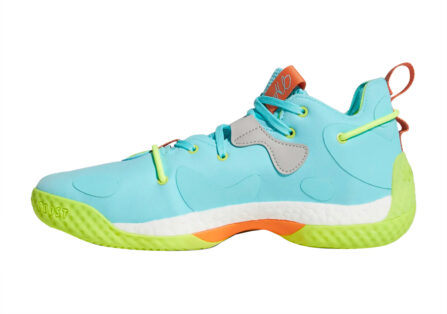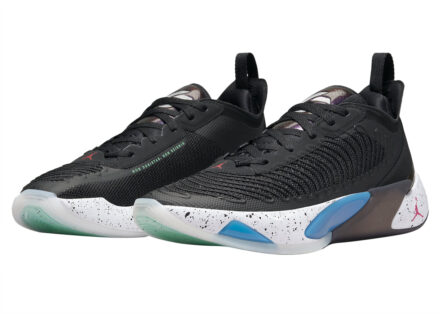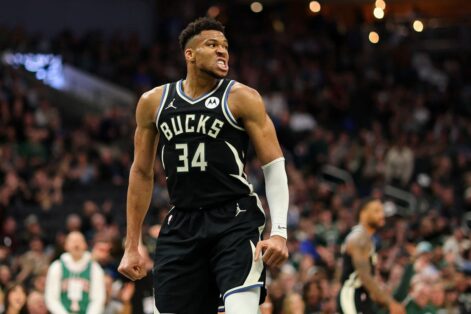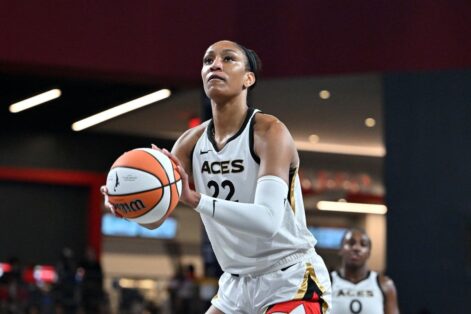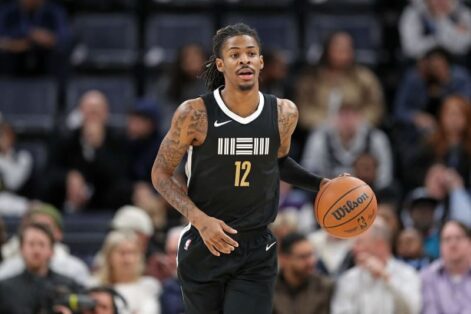
Due to a combination of physical concerns and being older than most prospects, Desmond Bane fell to the tail end of the first round in the 2020 NBA Draft. Immediately though, he showed why he was the premier shooter in the draft class. He became a big part of the Grizzlies’ rotation and averaged 9.2 points per game with 1.7 made triples on 43.2% shooting. That 43.2% mark is the best from a rookie (min. 150 attempts) since Steph Curry.
Through his six games in October, he’s more than doubled his scoring total while only playing 7.4 more minutes per game. It feels more and more likely that he ends up reaching his top end outcome as a player. In this month’s edition of Monthly Musing, we’ll look at how and why Bane’s production has increased and illustrate why his October was spooky (it’s a Halloween thing, let me live).
But First, Numbers
Basic Per Game and Per Possession Stats
(Via Basketball-Reference)
- 104% increase in raw scoring: 9.2 PPG → 18.8 PPG
- Only a 33.2% increase in raw minutes per game: 22.3 MPG → 29.7 MPG
- 55.8% increase in per possession scoring: 19.7 points per 100 → 30.7 points per 100
- 122% increase in raw turnovers per game: 0.9 TO → 2.0 TO
- 73.7% increase in turnovers per possession: 1.9 turnovers per 100 → 3.3 turnovers per 100
There is a noticeable uptick in points per game and rate of scoring beyond an increase in minutes. There is also a similar increase in turnovers.
Shooting Tracking Stats
- 100% increase in pull-up two pointers attempted: 1.0 per game → 2.0 per game
- 29.9% increase in frequency of shots taken after a dribble: 46.1% → 60.9%
- 201% increase in threes attempted after a dribble: 0.5 per game (12.5% of all 3PA) → 3.2 per game (37.6% of all 3PA)
- 100% increase in percent of self-created midrange jumpers: 11% → 22%
- 37.5% increase in unassisted two point makes: 29.1% → 40.0%
There seems to be an increase in self-creation and/or ball handling duties for Bane in the early goings of the season.
Other Data
(Via PBP Stats and Basketball Index)
- 42 percentage point increase in percentile ranking in Basketball Index’s Getting to the Rim Rating: 18th percentile → 60th percentile
- Four lost ball turnovers through six games while only recording seven in his 68 appearances in the prior season.
- 69.3% increase in lost ball + passing turnovers as a proportion of total turnovers: 49.2% (29 of his 59 turnovers were from lost balls or bad passes) to 83.3% (10 of his 12 turnovers were from lost balls or bad passes).
The numbers suggest that the increased production might be due to an increased number of on-ball reps which has provided both more scoring and more turnovers.
Look at Him Shoot
Bane has looked more comfortable as a shooter this season and has shown much more patience when dealing with closeouts. He’s able to adjust his shot by taking into account the defender and how long it would take for the closeout to be completed. This has resulted in more flybys which then turn into cleaner looks from range. It seems that he’s adjusted to the speed of the game — in particular, the speed of defenses.
The other big addition in Bane’s three point shooting is the incorporation of a dribble after a closeout. Again, this shows improved patience. By taking a dribble before shooting, he reorients his body, repositions himself, and reorganizes for a more accurate attempt.
Bane looks to be better at reading defenses and anticipating the timing of closeouts. This doesn’t just help him shoot more, but this also allows him to see the floor better. Being more patient, he’s able to see holes in the defense when rotations aren’t properly filled.
Being able to shoot alone isn’t enough. You have to be able to make closeouts pay. If a well-executed closeout can take a shooter out of the game, there wouldn’t be a ton of use for him come playoff time. But Bane is finding ways to make closeouts pay. If the defender is overeager, he’ll let them fly by and drill an easier shot. If the rotations become messy, he’s able to make a good read to punish the defense.
Let’s Go Inside
Bane doesn’t have the best tools for finishing. He’s listed at 6-foot-5 with a negative wingspan. In college, his inside game was predicated on being bigger and stronger than most guards. However, it’s hard to make that work in the NBA where nearly everyone is some degree of big and/or strong.
However, he’s still able to punish weaker and slighter players when the opportunity arises. He’s adept at using whichever hand he’s not holding the ball with to create distance between him and his defender. That and his strong frame creates necessary space for him to create separation from his defender.
Bane is a big guy, for us. But, he isn’t really outlier strong in the NBA. He can’t bully the vast majority of players in the NBA, Thus, his power based slashing game can be neutered by many forwards or other big guards. To compensate, he’s added hints of a change of pace and/or direction to his drives and transition forays. While not exactly the most coordinated or most flexible guard, this is an additional layer of skill that he should be able to count on in scenarios where he has space to work and a man to beat.
Despite that improvement, I don’t consider him to be a huge threat slashing to the rim. His physical limitations and his unpolished ball handling make it hard for him to finish over length and in situations where the paint is more cramped. There are occasions where he picks the ball up too early (where a dribble would help him get a better angle or provide an extra step for a closer shot) which leads to a case of overextension into a missed layup or a tough floater.
Sometimes, I can’t help but think he could have made a shot if he had a 6’8 wingspan. If he continues to improve in being able to keep a live dribble, it could be easy to see him being more of a threat downhill. A shooter of his caliber would be very, very dangerous (dare I say, spooky) if he’s able to pressure the rim as well.
Since I’ve already mentioned it, his handles aren’t the tightest in the world. It was perceived to be one of his bigger weaknesses as a player heading into the league and that continues to be a case despite clear improvement. Handles are probably one of the hardest things to learn as it requires in game repetition to fully hone. With the ball being in the hands of a good dribbler more often than not, less talented dribblers don’t get the necessary room to grow. With Bane though, it is good to see him regularly getting reps despite not being fantastic at it at the moment.
Going back to the numbers from earlier, he’s on pace to match his lost ball turnovers by his 10th or 11th game. This shows that he’s getting the necessary game reps to become better. There is a tendency for him to pick the ball up at the first sight of pressure, to get the ball poked loose as he gathers, or to just simply lose control of the ball momentarily. If I could guess, I’d say it’s a balance issue when he’s moving forward. But, I probably don’t know enough about the human body to say more about it.
The matter of his handles becomes clearly apparent in the halfcourt against a defense that plays him tight. First, his jumper has always been plagued by a somewhat low release point and a followthru that pushes almost forward instead of upward. This makes it imperative for him to create space to get a shot off when he has the ball in hand. His shot can be bothered when the defender is taller and longer than he is. By my eye though, he has had some improvement in terms of the release angle on his jumper and we’ll be discussing that a bit later.
His ball control isn’t at a level where you can rely on him in tight situations. When his vicinity is cramped, when bigs hedge, or when help comes from a stunt or dig, he tends to stop dribbling. It’s rare to see him probe and keep a live dribble after an immediate threat appears. The next reel is a bunch of plays where the big comes out to meet him after a pick or a dribble handoff (DHO) and one play where a dig forces him to pick the ball up. To his credit, he’s able to make some good reads out of this situation. However, he has yet to show a good response to more aggressive defense so far this season.
When the defense is in drop coverage (when the big drops closer to the basket after a screen) or when he is simply given some room to work with, Bane has gone to work. The numbers from earlier suggested an uptick in self creation has added to the increase in production and the film suggests the same. Whether he’s going downhill from a DHO or he’s facing a backpedaling big, Bane has shown the ability to rise and pull up from the midrange consistently. He has even shown flashes of having pull-up equity from range. His percentages might not look all too good, but in time, he could very well be a very potent pull-up shooter from three. The last clip in the next reel shows him rising up and drilling a triple as soon as he feels his defender moving backwards.
His newfound success likely stems from improved upper body shot mechanics. The release looks to be a fair bit higher than it did in the NCAA where he only shot 30.8% from midrange and struggled getting his shot up. To add, his follow through seems to be going more upward than forward.
Going back to his shot creation, he has hit a few shots after snaking a pick and roll. It’s becoming a bit clear that he is comfortable going against a less aggressive pick-and-roll (PnR) coverage and that he’s made legitimate strides in his pull-up game.
Along with his comfort handling the ball and shooting, he’s also shown an affinity for making plays out of the PnR against the aforementioned less aggressive defenses. Without ball pressure from the big, he’s more free to go downhill or go through possible passing reads. In my opinion, he’s shown enough to make me consider the idea of him becoming a secondary playmaker at some point down the road. He’s only really capable of making plays when the right conditions are met at the moment, but in time (and with more reps) he could round his on-ball game really well. Bane is a good passer, but his ball handling tends to prevent that part of his game from shining. He’s shown good decision-making and a solid process for progressing through reads, but he’s got a bit of improving before he can be considered a playmaker.
A BETTER PLAYER WITH CLEAR PATHS FOR GROWTH
Desmond Bane was considered by many as a steal for the Grizzlies and he’s lived up to that billing. He’s shown good strides as both a shooter and a shot creator so far and he’s been given the opportunity to build up on that. He’s addressed some of the concerns that surrounded him at the time of the draft and is looking to have a successful sophomore campaign. His scoring seems sustainable and repeatable. He’s not shooting at a super high percentage that seems impossible to maintain (he might drop a few percentage points, but nothing too drastic). He’s not trying stuff that’s hard to repeat on a game-by-game basis. Bane has scored 17 points or more in all of his first six games. More likely than not, that level of production is for real (or at least, he’s a player who can approach that level of production consistently).
The fun part here is that there’s still clear room for improvement. His handles are better and he’s able to add some change of pace and/or direction, but the problems in close quarters still show up. This season, he didn’t become a radically different player, but he’s become a better one with clear paths for growth.
Author’s Note: Against my better judgement, I decided not to photoshop Bane’s mask onto Desmond Bane’s face. I deeply apologize to the spirit of Halloween.



